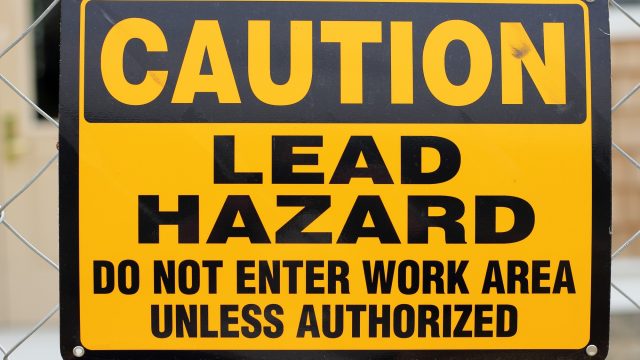
Lead exposure is more common than people may think. “In 2024, one of the most potent neurotoxins known to humanity persists all over the world as a public health threat,” said Vox. Yes, that potent neurotoxin is lead. The toxic metal has been found in food products, water pipes, drinkware and cookware. Unfortunately, there is no safe level of lead consumption in humans, and young children are especially vulnerable to lead poisoning.
Where is lead still prevalent?
The frequentness of lead in everyday life may come as a surprise, especially because “by the 1990s, nearly every country had eliminated leaded gasoline, once easily the most ubiquitous source of lead pollution,” said Vox. But the metal is practically everywhere and is a bigger problem in developing nations. “So much of the food that we eat is coming from all over the world,” Stephen Luby, who studies lead pollution at Stanford University, said to Vox. “We are deluding ourselves if we think we can push pollution problems to low-income countries and not worry about it.”
“Lead in the drinking water is still a problem in many parts of the U.S.,” said NPR. Though lead has been banned from water pipes since 1986, many of the country’s homes were built before that year. Chicago, for example, has had particularly high lead exposure. “When it’s hidden in our water and people don’t have good information about lead in their water, they end up drinking it every day,” Elin Betanzo, president of Safe Water Engineering in Detroit, said to NPR. More recently, lead was found in six brands of ground cinnamon spice and caused a recall of children’s applesauce pouches in fall 2023. The toxin is also used in the (in)famous Stanley cups as part of the containers’ vacuum insulation. “If the cup stays intact, there’s likely no lead exposure risk for consumers,” said Jane Houlihan, research director for Healthy Babies, Bright Futures, to CNN. “But if that bottom seal comes off, all bets are off.”
What are the dangers of lead exposure?
So, how bad is lead exposure? Well, as Luby said, “lead is a toxin like no other. People think about ‘Oh, yeah. Lead’s bad. Mercury’s bad. Cadmium’s bad. Air pollution is bad. All these things.’ No — lead is really disproportionately bad.” Lead’s “widespread use has resulted in extensive environmental contamination, human exposure and significant public health problems in many parts of the world,” the World Health Organization (WHO) said.
Lead exposure can cause lead poisoning, which can inhibit DNA’s ability to repair itself and cause neurological and developmental problems. Children are the most at risk. “Children, in particular, can absorb four to five times more lead than adults on account of hand-to-mouth behavior. Once absorbed it is distributed to the organs such as the kidneys and liver and in time is stored in the bones,” said Euronews. At high levels of exposure, the “brain and central nervous system can be severely damaged, causing coma, convulsions and even death,” said the WHO. “At lower levels of exposure that cause no obvious symptoms, lead is now known to produce a spectrum of injury across multiple body systems,” including hindering brain development and reducing attention span. In addition, lead bioaccumulates, meaning even small amounts can build up in the body over time.
Getting rid of lead will not be easy. Lead has been built into many modern-day systems. “It’s always been there, to be honest. From a basic level, since industrialization, lead has been there,” said Jenna Forsyth, a research scientist at Stanford, to Vox. “Lately, there’s been a closer inspection. And the more we look, the more lead we will find.” Global policy changes are required to truly reduce lead contamination. “We cannot inspect our way out of this problem. You could spend a fortune in perpetuity and only catch a tiny fraction of contaminated goods coming into the United States,” Drew McCartor, executive director of Pure Earth, said to Vox. “If we really want to solve this, it requires a whole-of-government commitment to work outside of our borders.”
The toxin is built into our lives






